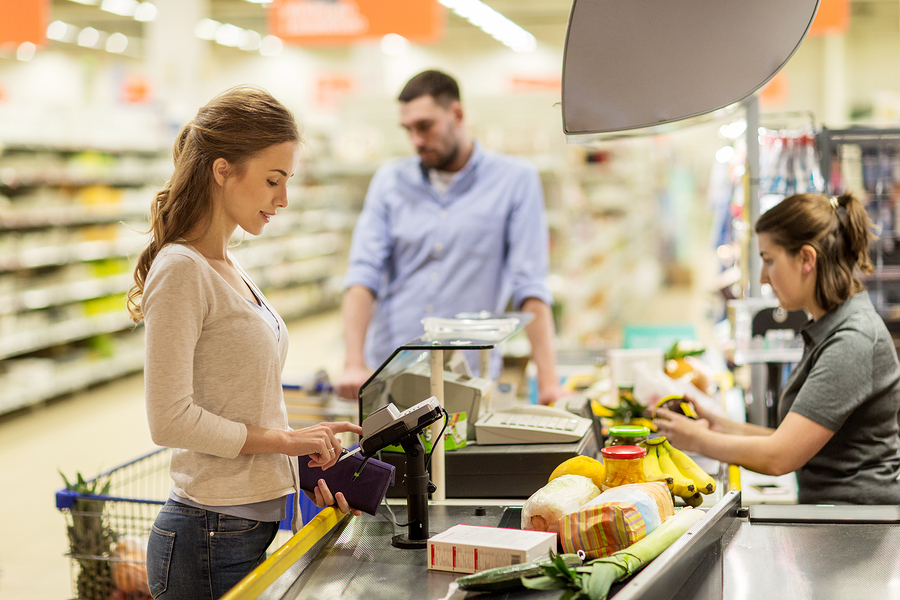
How to thrive! Viper thought leadership #18
By Diane Ellis, Matt Gutermuth, D.G. Hague and Monica Woo
4-minute read
VIPER EA enables retailers across all verticals and formats to thrive by increasing revenue flow through to the profit line. Always well informed of market trends, VIPER’s CEO D.G. Hague holds a monthly roundtable discussion with his company’s advisory board, made up of C-suite executives from venerable companies in retail, private equity and consumer products sectors. In the latest session, D.G. posed the question:
“What are the key learnings from retailers that have weathered the 2020 pandemic and continue to thrive in 2021?”
MATTHEW GUTERMUTH: Retail eCommerce boomed in 2020, especially for the grocery sector, which is my focus area. Year-over-year eCommerce sales increased by 30% in 2020 and 39% in Q1, 2021. Digital “trips” now make up over 10% of all grocery transactions. Many grocers partner with third party providers, to ratchet up online order fulfillment capability, as well as to address consumers’ demand for delivery on the same day, even within the same hour. For example, Albertson Companies recently teamed up with Uber Eats, further expanding their roster of external providers beyond Instacart, Door Dash and Shipt, etc.
With outsourcing elements of the end-to-end eCommerce experience, grocers relinquish control of the customer experience and critical shopper data. Instacart is fast becoming America’s top grocer commanding 50% share of online sales. What if Instacart were to leverage its shopper data, expansive product library and fulfillment know-how, cut out the retailers and pivot to a direct-to-consumer model? Not a far-fetched scenario, I think. In fact, Instacart is already experimenting with this model today!
In the long run, retailers need to invest in their own digital offerings and reduce reliance on outsourcers. In the immediate term, retailers should reclaim ownership of shopper data and brand presence on the third-party platforms like Instacart. Also, bolster Buy Online and Pick up in Store (“BOPIS”) service. 48% of US consumers used curbside pickup prior to and during the pandemic and the usage penetration is expected to increase post pandemic.
I am impressed with H-E-B Grocery Company which has ascended to top ranking when it comes to online grocery pick up services, per IPSOS Ecommerce Experience Report. They excelled in metrics such as order accuracy and ease, stock availability and associates’ communication. Their unwavering commitment to excellent customer experience is admirable.
MONICA WOO: Matt, I echo your insight that retailers need to invest in new digital offerings. Many of the retailers that survived in 2020 and continue to thrive in 2021 had started rolling out interconnected shopping technology and operations way before COVID. They have proactively addressed the growing need for a seamless shopping and fulfillment experience between physical and digital channels, and their efforts are paying off.
Let’s look at The Home Depot, Inc., which increased net sales 32.7% and online sales 27% in Q1 2021, and achieved high double-digit growth in comparable sales and net earnings in 2020. The company not only effectively manages merchandising and in-stock inventory, but also, introduces new digital capabilities such as mixed cart selling. The customer can now combine products from the website and store into a single transaction. This new feature increases the average order value and improves the customer experience.
Another retailer whose investment in interconnected shopping technology has paid off is Ulta Beauty. In Q1 2021, Ulta Beauty grew sales +65.2% and achieved 15.8% in operating margin. During the pandemic, when stores were forced to close, Ulta Beauty drove sales and shopper engagement with their mobile app and digital services like GLAMlab, an augmented reality enabled try-on of beauty products. What impresses me is that Ulta Beauty had the vision to pilot GLAMlab in 2016 and optimized this digital tool over the years. COVID shutdown accelerated consumer adoption of the technology.
With interconnected shopping, a massive amount of internal and third party-sourced data is generated. Retailers need to have the Machine Learning and data science capabilities to collect, organize and analyze the information swiftly at scale.
DIANE ELLIS: I am also a big fan of Ulta Beauty and can’t wait to check out their store inside Target. I’d like to build on the great insights from both of you and share two learnings.
First, in addition to technology that enhances the customer experience, retailers would benefit from investing in technology that boosts the store associates’ productivity, particularly given the labor shortages and retention challenges we are now experiencing. I am delighted that Kering, the luxury retail brand group, has invested in technology that bolster associates’ productivity. For example, store associates can use an app to check stocks real-time, as well as access the customers’ transaction history to recommend purchases and sizes during the virtual shopping consultation sessions. To better control the customer experience end-to-end, Kering is transitioning the operations of most of their brands’ eCommerce businesses in-house from a third-party joint venture.
Second, whether it’s recovering from the pandemic or fortifying against the risk of COVID resurgence in 2021, retailers must eliminate operational inefficiencies to maximize profitability and liquidity.
One solution that retailers are relying on to deliver impact to their bottom line is VIPER’s Rapid Assessment solution. By combining state-of-the-art data analytics and Machine Learning predictive model, VIPER can accurately pinpoint profit drains by physical and digital channel, store location, SKU, operating function, vendor, external partner, fulfillment and distribution center. And the assessment is completed in just a few weeks.
MW: Given the shortage in data science and Machine Learning talent, the outsourcing of large-scale data analytics and Artificial Intelligence predictive modeling with a proven expert like VIPER makes a great deal of sense. Besides uncovering incremental profit opportunities, VIPER also recommends practical and timely actions to improve productivity down to the store personnel and product level.
MG: I love VIPER’s gain share model and only gets paid when the retailer increases profit. Plus, they offer a $1 million Profit Improvement Guarantee™. VIPER will deliver a minimum of $1 million in profit increase or pay the difference. Now that’s truly looking out for the retailers!
Diane Ellis is a board director and CEO of DME Advisory Group LLC. She is a board member of iAnthus Capital LLC. Previously, she was Brand President of Chico’s at Chico’s FAS, Inc., CEO of The Limited, and President / COO of Brooks Brothers. Diane is a VIPER EA LLC Executive Board Advisor.
Matthew Gutermuth is the CEO of iControl Data Solutions, as well as Chairman of the Board at GroceryKey and TendedBar. Previously, he was President/CEO of Safeway.com and was a member of Winn-Dixie’s executive team who achieved their turnaround (2008-2012). Matt is a VIPER EA LLC Executive Board Advisor.
D.G. Hague is the CEO of VIPER EA, has served as an operating partner/advisor of several private equity firms, and is a board member to a number of for-profit and non-profit organizations. D.G. was formerly CEO & President of Centerplate, President of IHOP and of Safeway Corporate Perishables.
Monica Woo is the CEO of WooWorks, which propels growth and invests in digital commerce, Artificial Intelligence and retail companies. Previously, she was President of 1-800-Flowers.com and Bacardi Global Brands, and was FreshDirect’s (Ahold Delhaize) Chief Revenue & Strategy Officer. Monica is a VIPER EA LLC Executive Board Advisor.



